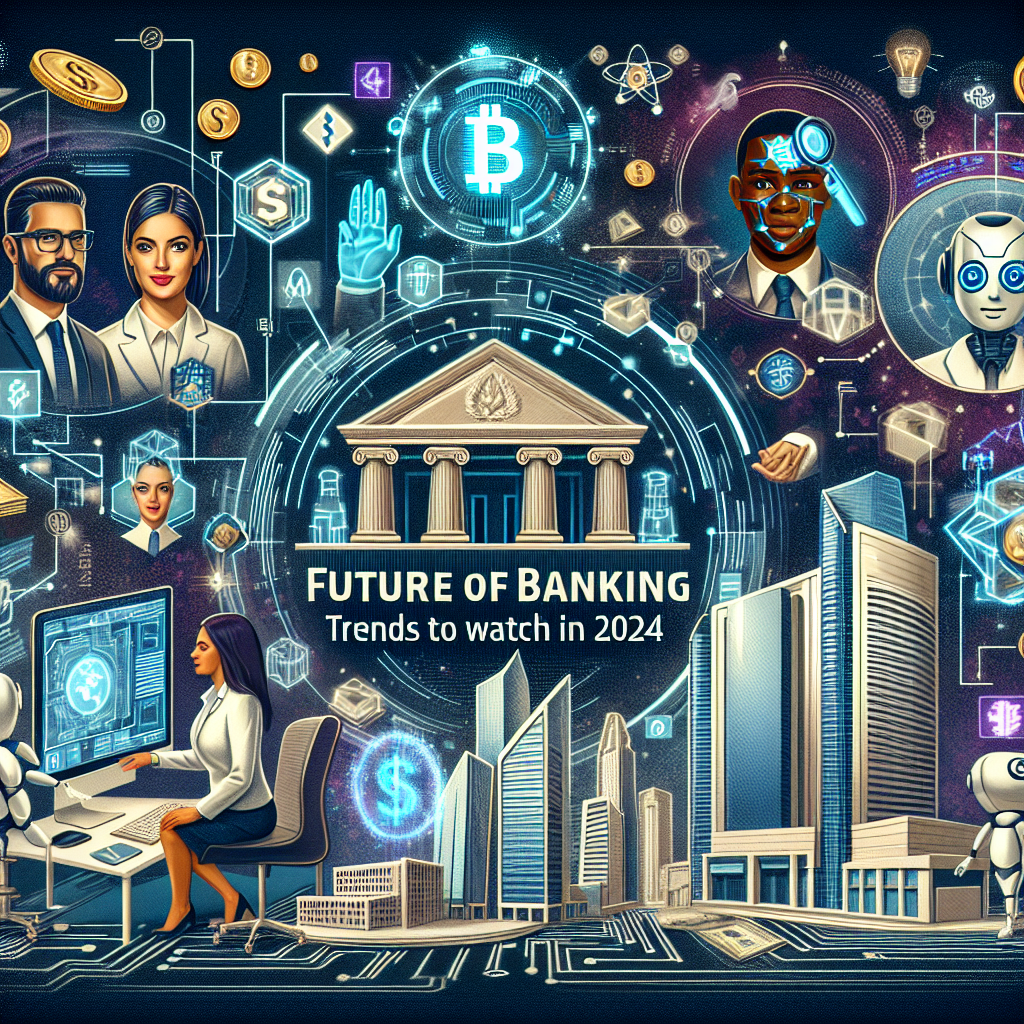The Future of Banking: Trends to Watch in 2024
As we stand on the brink of 2024, the banking industry is undergoing seismic shifts driven by technological innovation, changing consumer expectations, and evolving regulatory landscapes. Here’s an in-depth look at the trends set to shape the future of banking in the coming year.
1. Blockchain and Decentralized Finance (DeFi)
Blockchain technology and DeFi have been around for a few years, but 2024 promises to be a breakout year for these innovations in banking. Banks are exploring the integration of blockchain for secure transactions and transparent record-keeping. Decentralized Finance is gaining traction as it allows for peer-to-peer financial services without traditional intermediaries. This shift could potentially lower costs and provide more inclusivity, particularly for the unbanked and underbanked populations.
2. Artificial Intelligence and Machine Learning
Artificial Intelligence (AI) and Machine Learning (ML) are not new to banking, but their applications are expanding. From fraud detection to personalized customer service, AI and ML help banks manage risks more effectively while providing customized financial advice and solutions. Predictive analytics can anticipate customer needs and preferences, further enhancing customer experience and engagement.
3. Digital-only Banks
Digital-only banks, or neobanks, continue to disrupt the traditional banking landscape. These fintech entities operate without physical branches, offering services via mobile apps and online platforms. They appeal especially to tech-savvy millennials and Gen Z consumers who prefer the convenience of managing their finances from their smartphones. As digital transformation accelerates, more established banks are likely to adopt a digital-only approach for certain segments, blurring the lines between traditional and digital-native players.
4. Enhanced Cybersecurity
With the increase in digital transactions, cybersecurity has become a critical concern for banks. In 2024, we’ll see a greater emphasis on advanced defense mechanisms such as biometric authentication, multi-factor authentication (MFA), and zero-trust architectures. Banks will also invest in educating consumers about potential cyber threats, ensuring that both customers and institutions are armed against increasingly sophisticated cyberattacks.
5. Sustainable Banking
Sustainability is no longer just a buzzword but a vital component of financial services. Banks are increasingly focusing on Environmental, Social, and Governance (ESG) criteria while making lending decisions and investment strategies. Green banking products, such as loans for renewable energy projects and investments in sustainable enterprises, are gaining popularity. In 2024, the integration of sustainable practices in banking will likely become a competitive differentiator.
6. Open Banking
Open banking, which allows third-party financial service providers to access banking data with customer consent, is set to flourish. This move facilitates more competition and innovation, ultimately benefiting consumers with more choices and better services. The European Union’s Revised Payment Services Directive (PSD2) has already pioneered this concept, and other regions are expected to follow suit. Open banking fosters collaboration between banks and fintechs, allowing for the development of cutting-edge financial products and services.
7. Hyper-Personalization
Yesterday’s one-size-fits-all approach is giving way to hyper-personalization. By leveraging data analytics, banks can offer more targeted financial products and services. Whether it’s customized loan offers, investment portfolios tailored to individual risk profiles, or personalized financial advice, customers in 2024 will expect a banking experience that is uniquely theirs.
8. Real-Time Payments
Instant gratification is the new norm, and real-time payments reflect this trend. Whether it’s peer-to-peer transfers, bill payments, or business transactions, customers expect funds to be transferred instantly. Infrastructure improvements and the adoption of technologies like the Federal Reserve’s FedNow Service in the United States are making real-time payments a reality, offering faster, more efficient financial transactions.
9. RegTech and Compliance Automation
Regulatory Technology (RegTech) is becoming essential for banks to navigate the complex web of compliance requirements efficiently. RegTech tools help institutions manage regulatory reporting, conduct due diligence, and monitor transactions for suspicious activities. Automating these processes not only reduces human error but also decreases the time and cost involved in compliance, enabling banks to focus more on strategic initiatives.
Conclusion
The banking industry is on the cusp of a transformation headed by technological innovations and changing consumer behaviors. As we move into 2024, banks that embrace these trends will be better positioned to meet the demands of the modern consumer while staying ahead of the curve. From the rise of digital-only banks to the mainstream adoption of blockchain, the future of banking promises to be more dynamic, inclusive, and intelligent than ever before.














Leave feedback about this
You must be logged in to post a comment.